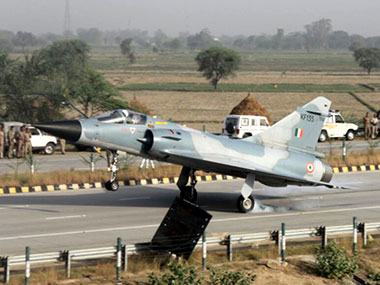In the early hours of 13 June, 1999, when the Kargil War was at its peak, the Indian Air Force was on verge of launching a full-scale air strike deep into Pakistan, reports NDTV. Plans had been laid out, targets had been assigned, routes finalised and the pilots debriefed about the bombing mission. This mission, if had seen the light of the day would have spiraled the Kargil conflict into a full-blown war between the neighbours. [caption id=“attachment_2669112” align=“alignleft” width=“380”]  Representational image. PTI[/caption] According to the NDTV report, this attack was planned in response to the failed dialogue between the then foreign minister Jaswant Singh and his Pakistani counterpart Sartaj Aziz. In order to end the war, a set of guidelines had been given to Aziz — to give up the demand for redrawing the Line Of Control in Kashmir and to punish those who tortured six Indian soldiers. As the talks fell through, New Delhi decided that it had had enough. What followed was extensive planning of a mission, where the Indian Air Force was to launch its first attack on Pakistan since the 1970 war. After the failed dialogue, all pilots were called and were given Command Air Tasking Orders for a pre-emptive strike at dawn on 13 June, as recorded in the Squadron diary of the Air Force’s 17 Squadron, the “Golden Arrows”. The diary further elaborated that the air force was supposed to carry out a four-aircraft bombing mission in PoK and Bomb Damage Asessment of Chakala (a major Pakistani Air Force airbase in Rawalpindi), reports NDTV. The pilots were then asked to prepare for the mission, calculate routes, load bullets into revolvers and collect Pakistani currency. But on the morning of 13 June, even as the pilots reported to the squadron, execution orders had not yet been received, and after a few hours, the mission was abandoned. The “Golden Arrows” were not the only squadron on the verge of flying into Pakistan in June 1999. A former MiG pilot, deployed in the region, in an interview to NDTV, confirmed receiving orders to fly across the Line Of Control. Four MiG-21s were to be a part of an attack mission,along with four MiG-29s air superiority fighters, which were to act as cover for an Indian “strike package” that had been ordered to carry out attacks at the Chaklala airbase. 16 fighter jets in all were to be deployed across the border in this massive attack,one of the first in a wave of missions. This mission too however was called off at about 12 am. The pilots at the squadron, received `No Go’ orders at 3 am. The mission in retrospect was seen as fraught with danger, as not only could Pakistan’s premier F-16 fighters, intercept any Indian strike mission, but Pakistan, armed with surface-to-air missiles (SAMs), with a range of 10 kilometres, could destroy incoming Indian aircraft within seconds. The only advantage that the Indian Air Force had was a larger strength of fighter jets than Pakistan and many more long-range air-to-air missiles. While this could be one of the reasons why the government almost carried out air strikes in Pakistan, the rationale for the last-minute shelving of the operation same still remains a secret.
In the early hours of 13 June, 1999, when Kargil War was at its peak, the Indian Air force was on the precipice of launching a full scale air strike deep into Pakistan
Advertisement
End of Article


)

)
)
)
)
)
)
)
)



